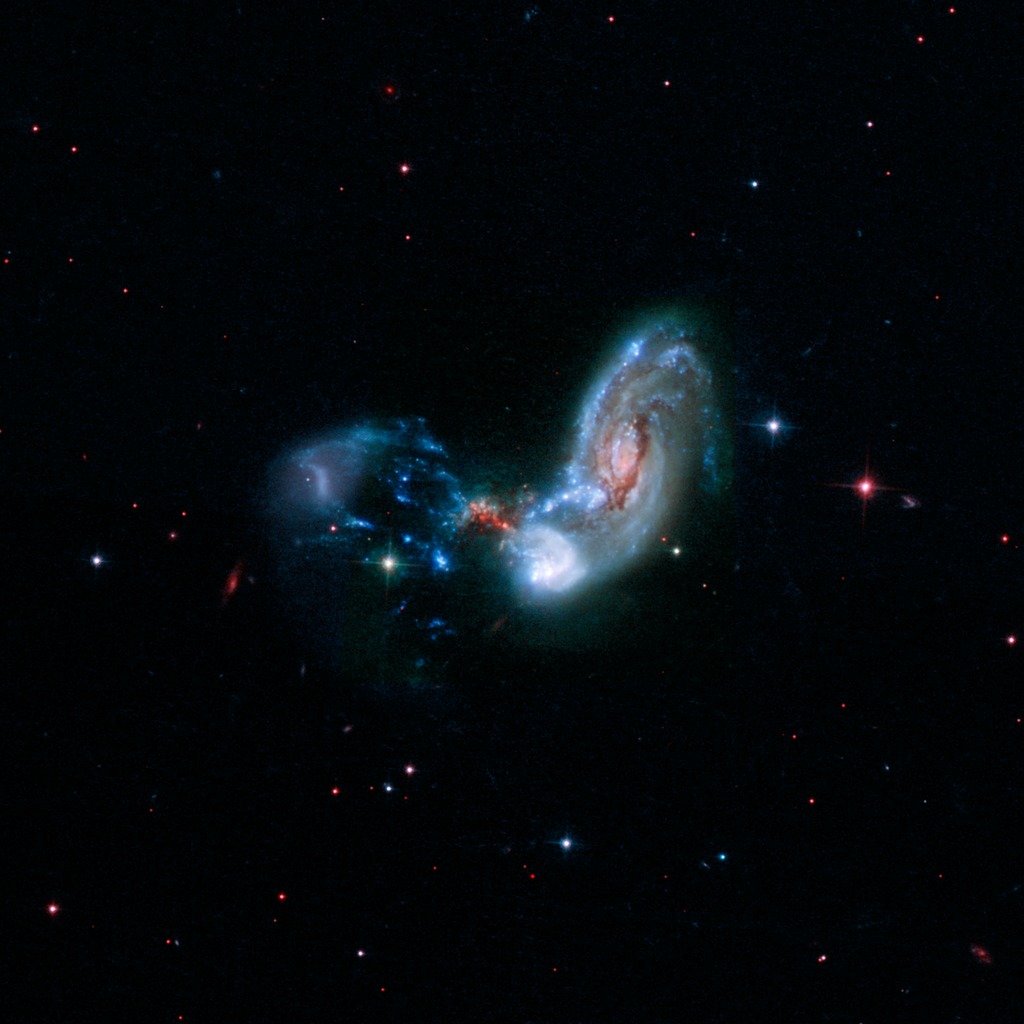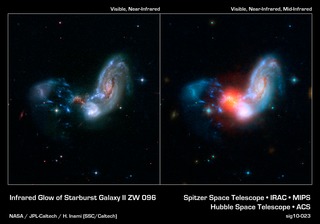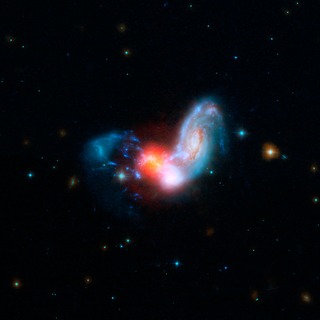
Credit: NASA/JPL-Caltech/STScI/H. Inami (SSC/Caltech)
Observation • November 18th, 2010 • sig10-023b
sig10-023b
The merging galaxies known collectively as II Zw 096 are shown in this image from NASA's Hubble Space Telescope. This rendering combines light spanning the far-ultraviolet into the near-infrared.
This galaxy merger is the site of a spectacular burst of star formation that is hinted at in the red speckles near the middle of the image. This dust-shrouded area conceals a brilliant burst of star formation that becomes more apparent at longer wavelengths of infrared light.
Researchers using infrared data from NASA's Spitzer Space Telescope estimate the starburst is cranking out stars at the breakneck pace of around 100 solar masses, or masses of our Sun, per year. They were surprised to see such a brilliant infrared glow in an area so far offset from the center of the spiral galaxy. Starbursts are often found crammed into the very centers of merging galaxies, but this is the brightest starburst ever seen outside a galaxy's nucleus.
This Hubble image represents far-ultraviolet light at a wavelength of 0.15 microns as blue, visible light at 0.44 microns as cyan, and near infrared light at 0.9 microns as red.
About the Object
- Name
- II Zw 096
- Type
- Galaxy > Type > Interacting
- Galaxy > Type > Spiral
- Galaxy > Activity > Starburst
- Galaxy > Grouping > Pair
- Distance
- 525,000,000 Light Years
- Redshift
- 0.036
Color Mapping
| Band | Wavelength | Telescope |
| UV | 140 nm | Hubble SBC |
| Optical | 440 nm | Hubble ACS |
| Infrared | 900 nm | Hubble ACS |
Astrometrics
- Position (J2000)
- RA =20h 57m 24.3s
- Dec = 17° 7' 40.3"
- Field of View
- 1.5 x 1.5 arcminutes
- Orientation
- North is up






